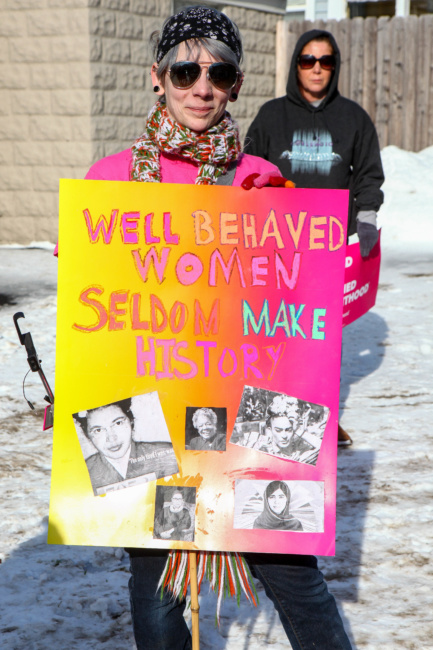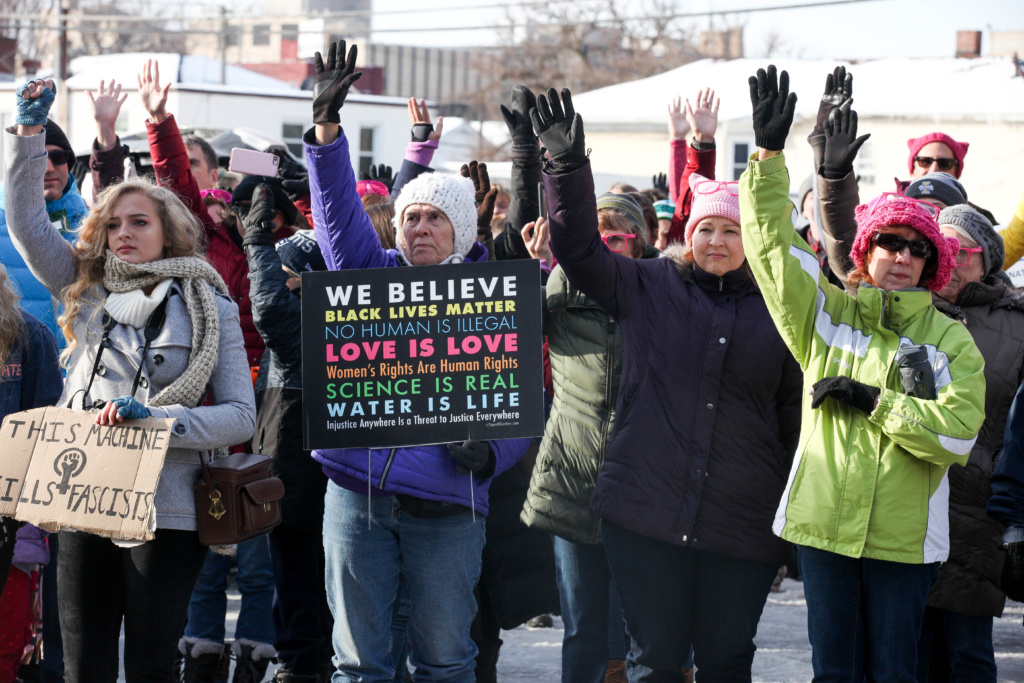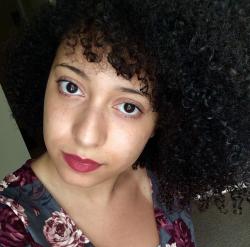A crowd formed in the parking lot of Laci’s Tapas Bar on Syracuse’s North Side Saturday morning, Jan. 20. The group began as only a handful of women, but soon it swelled to more than 300 as the time of the rally drew closer.
The crowd was a mix of backgrounds and life experiences. Ages ranged from toddler to Vietnam War veterans. Some were native-born U.S. citizens, while others were immigrants. Decked out in iconic pink “pussy hats,” holding signs and chanting in unison, they all had a single goal: solidarity.
“What does a feminist look like?” Roseanne Olszewski, a co-founder of Syracuse’s New Feminists for Justice, the group behind the event, asked the marchers.
“This is what a feminist looks like!” they roared back.

Amid the outward show of love and support for all women, a discussion was stirring about the role of intersectionality and allyship. A letter, penned by “a coalition of women,” was read aloud before the march began. Titled “Dear Sisterz,” the piece acknowledged a problem with the women’s march — both national and local — seemingly creating a platform that favored white, heterosexual, able-bodied, cisgendered women.
“Although the mass mobilization against Donald Trump was impressive, it left many womxn behind, feeling a collective sense of ‘where have you been’ and also ‘where are you going to be next week’ when the real work needs to be done,” the letter stated.
The 2018 Women’s March took place nationwide to support women’s rights and equality and bring awareness to the current political climate. (“What makes America great? Love makes America great,” was a common local call-and-response.) It came on the anniversary of last year’s Women’s March — the initial event that drew millions worldwide — and one year after President Trump’s inauguration.
Syracuse’s New Feminists for Justice, with Olszewski and co-founder Donna Moore, spearheaded both the 2017 and 2018 marches. Olszewski said she was looking for an outlet for her frustration, as she feared the new administration would derail progressive policies.
“We determined, if the country was going to resist this, we would need a feminist movement,” Olszewski said. The group also organized last year’s thousands-strong Women’s March.
This year’s event was to promote healing and celebrate the accomplishments of women. Along with the rally Saturday there was a Women Together Inspiring Entrepreneurial Success (TIES) event on Friday, Jan. 19, to discuss supporting women-owned businesses and the history of women’s suffrage, and a special tailgating event for the Sunday, Jan. 21, Syracuse University women’s basketball game against the Pittsburgh Panthers (SU won 70-52).
The group marched to the ArtRage gallery a few blocks from Laci’s. The gallery agreed to keep its exhibit, Still The One: Douglas Lloyd Makes Portraits of Women Making Change the Old-Fashioned Way, up for the weekend so marchers could see the 26 local women activists displayed in the show.
Poet Joan Netta Burstyn, an English immigrant who remembered the previous women’s rights movement, spoke of resistance and keeping momentum going in the face of adversity.
“What does it take for me to be true to what I want, even if I’m not going to get it?” she told the group to ask themselves.
Azra Gradincic, another speaker, recently became a U.S. citizen after immigrating to the country from Bosnia in the 1990s while fleeing the Bosnian War. She recalled bullets flying through her home as a child, remembered dodging sniper fire in the streets and described a near-death experience when a grenade was thrown into an apartment where she and her family were seeking refuge.
She told the mass of people packed into the gallery that they had strength in numbers and in their unity: “This is my home. These are my people. I love my people.”
Although Olszewski said the group told the community everyone could be involved and let people come to them if they wanted to be present, Cjala Surratt, one of the people behind the letter, said historically that type of laid-back attitude isn’t enough.
“It’s indicative of an ongoing issue,” she said. Marginalized women were not involved in planning the event, creating a microcosm of the common issues seen in most political spaces: The majority holds power, while the less privileged go unheard. There was passion in having a movement, but a seeming lack of interest in long-term community investment or engagement, Surratt said.
Olszewski said event organizers heard the message and would try to be more inclusive going forward. Surratt said this mindfulness, and seeking other voices to lead, is the mark of true allyship and can help create a better sense of unity rather than schism in the movement. This is especially true in the current political climate, where she said silence for some has a stronger potential to lead to ramifications.
“You should always ask yourself, whether you’re sitting in a room or meeting virtually, whose voice isn’t present,” Surratt said.



